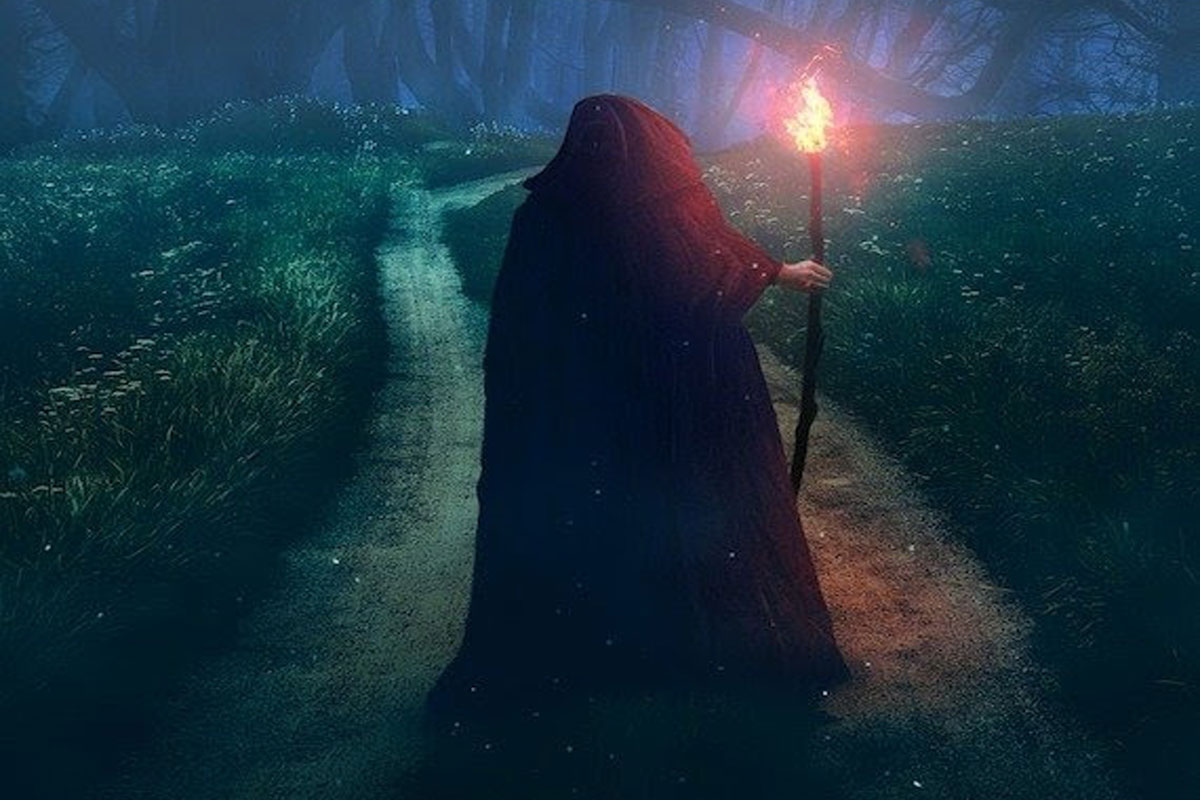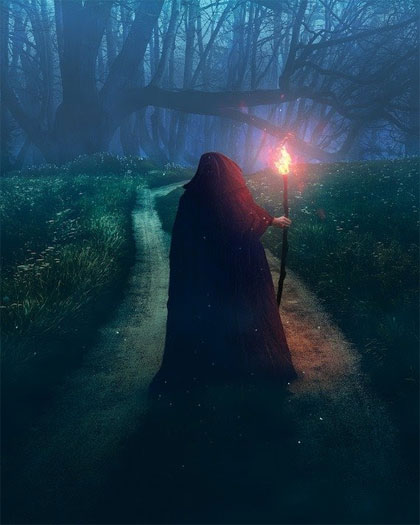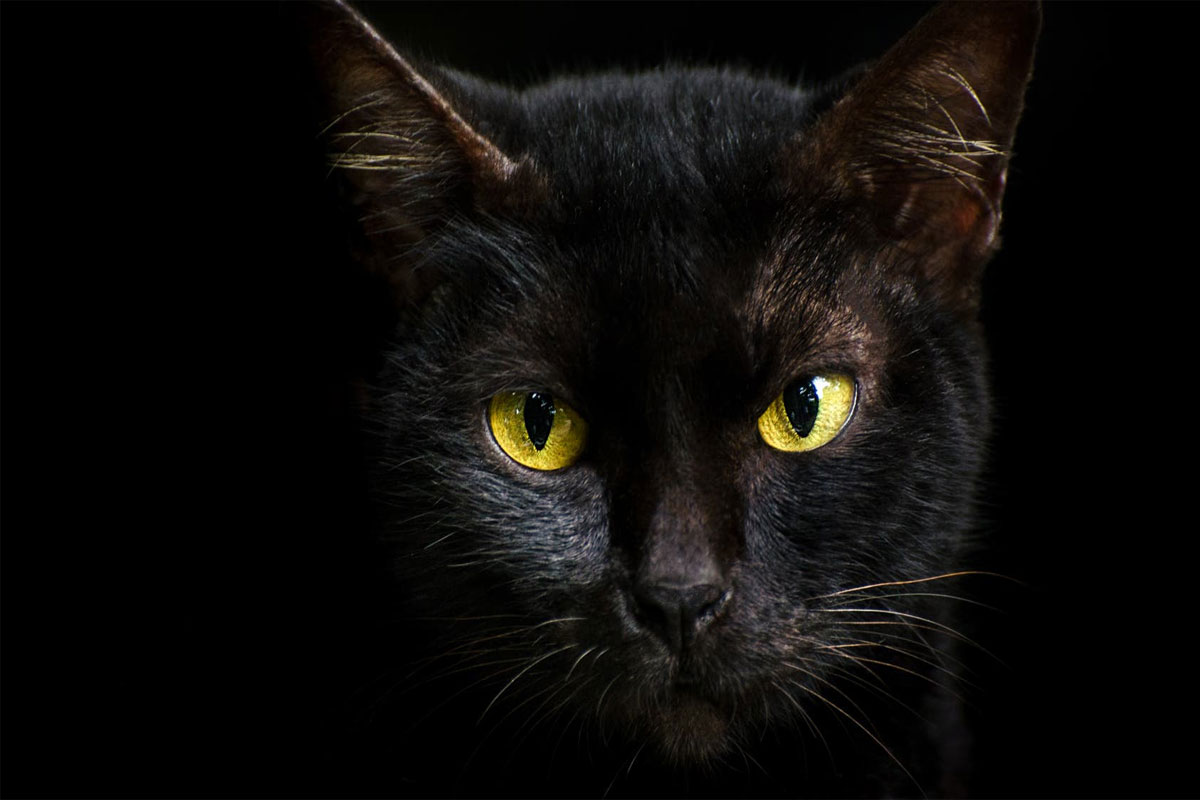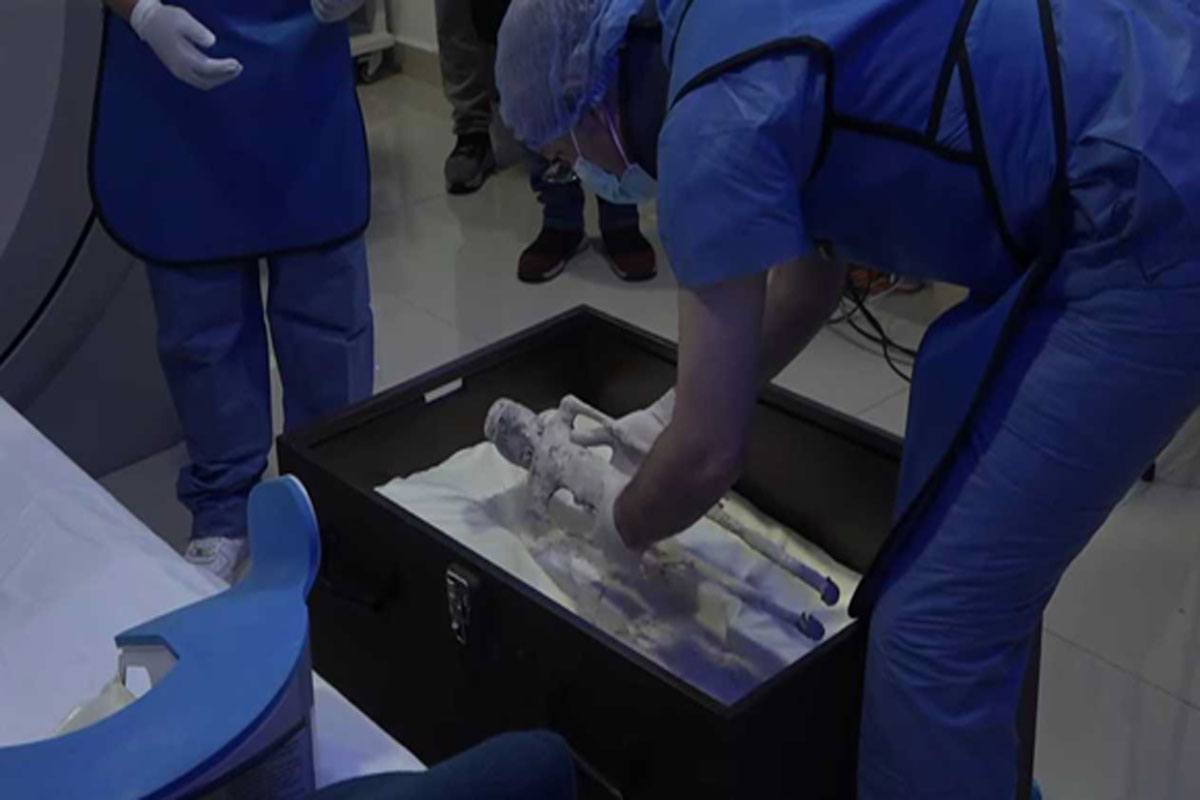
The Brahan Seer: The Mysterious Tale of the Scottish Nostradamus
Brent Swancer
February 17, 2022
Throughout history there have been those mysterious people known for their alleged ability to peer into the future to glean from the ether images of events that have yet to happen. In the times before science took hold of the earth to drive out the idea of magic, such individuals were looked upon with a sense of awe and wonder, able to read the future like an open book, and with many of their predictions seeming to come true centuries after they were alive. The most famous of these is perhaps the 16th century French astrologer, physician and reputed seer Michel de Nostredame, better known as Nostradamus, but he was certainly not the only one from history to provide wondrous insight and prophecies of future events. At around the same time that Nostradamus was going about his business, there was another enigmatic individual doing the same thing in Scotland, who has managed to become ingrained in the lore of the area and who has a life that is permeated with mystery, mystique, and much debate.
Although his history is shrouded in much mystery, the man who would go on to become what is known as the Brahan Seer, also known by the name Coinneach Odhar, was allegedly born at the beginning of the 17th century, at Baile-na-Cille, in the parish of Uig on the Isle of Lewis, which lies within the Outer Hebrides archipelago in Scotland. According to the legend, he started out as a simple farmer, but little did he know that he had inherited what was called the “second sight” from his mother, an ability that allowed those afflicted with it to have visions of future events, whether they wanted it or not. It seems that he might have gone his whole life without even being aware of this latent power, if it were not for his discovery one day of a blue and black Adder stone, or a stone with a hole in the middle, which proved to be much more than a simple stone. There are several stories about how he actually acquired it, one being that he took a nap and awoke to find it in his pocket, and another being that it had been given to him by his mother, who had gotten it from a spirit, but in either version he would then look through the hole to find that he was able to peer into the future and see events that had not yet come to pass as clearly as if they were going on right before his eyes.
One of his first prophecies was apparently seeing his wife preparing a meal that had been poisoned without her knowledge by a nefarious party. The scene he saw through that stone was so vivid and real that he rushed home to warn her, luckily arriving before she ate it. To test out the accuracy of his prediction, he then gave some of the food to their dog, which promptly dropped dead. It seemed that the magic stone actually worked, and that he now had the power of second sight, and he then went about making a string of supposedly very accurate predictions spanning from the mundane to the epic. One of his most famous supposed prophecies was when he predicted the Battle of Culloden in 1746, which was the last battle on British soil between government troops and the Jacobite rebels, and which marked the demise of the Highland way of life as efforts were made to further integrate the Scottish Highlands into the Kingdom of Great Britain. The folklorist Alexander MacKenzie would say of Odhar’s prediction on the matter:
The Seer was at one time in the Culloden district on some important business. While passing over what is now so well known as the Battlefield of Culloden, he exclaimed, “Oh! Drummossie, thy bleak moor shall, ere many generations have passed away, be stained with the best blood of the Highlands. Glad am I that I will not see that day, for it will be a fearful period; heads will be lopped off by the score, and no mercy will be shown or quarter given on either side.” It is perhaps unnecessary to point out how literally this prophecy has been fulfilled on the occasion of the last battle fought on British soil. We have received several other versions of it from different parts of the country, almost all in identical terms.
 The battle would happen just as predicted half a century later on that very spot. He also foretold the Highland Clearances, during which the land reforms put in place by the Duke of Sutherland sent people away from their homes in order to make way for herds of sheep, with many of these displaced people fleeing to the New World. He supposedly predicted all of this well in advance, proclaiming:
The battle would happen just as predicted half a century later on that very spot. He also foretold the Highland Clearances, during which the land reforms put in place by the Duke of Sutherland sent people away from their homes in order to make way for herds of sheep, with many of these displaced people fleeing to the New World. He supposedly predicted all of this well in advance, proclaiming:
The day will come when there will be a road through the hills of Ross-shire from sea to sea, and a bridge upon every stream. That the people will degenerate as their country improves. That the clans will become so effeminate as to flee from their native country before an army of sheep. The day will come when the jaw-bone of the big sheep, or ‘ caoraich mhora,’ will put the plough on the rafters; when sheep shall become so numerous that the bleating of the one shall be heard by the other from Conchra in Lochalsh to Bun-da-Loch in Kintail they shall be at their height in price, and henceforth will go back and deteriorate, until they disappear altogether, and be so thoroughly forgotten that a man finding the jaw-bone of a sheep in a cairn, will not recognize it or be able to tell what animal it belonged to. The ancient proprietors of the soil shall give place to strange merchant proprietors, and the whole Highlands will become one huge deer forest ; the whole country will be so utterly desolated and depopulated that the crow of a cock shall not be heard north of Druim-Uachdair; the people will emigrate to Islands now unknown, but which shall yet be discovered in the boundless oceans, after which the deer and other wild animals in the huge wilderness shall be exterminated and drowned by horrid black rains. The people will then return and take undisturbed possession of the lands of their ancestors.
The Seer also foretold the building of the Caledonian Canal, which joins the three lochs, Loch Ness, Loch Oich and Loch Lochy. At the time this was thought of as a pretty ridiculous notion, something that would never happen, and MacKenzie would write of it:
He no doubt predicted many things which the unbeliever in his prophetic gifts may ascribe to great natural shrewdness. Among these may be placed his prophecy, 150 years before the Caledonian Canal was built, that ships would someday sail round the back of Tomnahurich Hill. He proclaimed, “Strange as it may seem to you this day, the time will come, and it is not far off, when full-rigged ships will be seen sailing eastward and westward by the back of Tomnahurich, near Inverness.” A gentleman in Inverness sent for Coinneach to take down his prophecies. He wrote several of them, but when he heard this one, he thought it so utterly absurd and impossible, that he threw the manuscript of what he had already written into the fire, and gave up any further communication with the Seer.
Not so absurd after all, it would turn out, because the joining of the lochs in the Great Glen was indeed accomplished by the construction of the Caledonian Canal in the 19th Century, forking off from the River Ness at the eastern head of Loch Ness and passing behind Tomnahurich Hill before exiting into the Moray Firth at Clachnaharry. Another bizarre series of predictions made by Odhar that would seemingly come true concerns the bridges over the River Ness. He once predicted that when five bridges had been built over the river, the world would experience great chaos, and sure enough, upon completion of the fifth bridge in 1939, World War II began. He also proclaimed that when nine bridges had been built, there would occur “fire, flood and calamity.” In 1987 the ninth bridge was completed, and the following year there would be a tragic explosion on the Piper Alpha oil platform in the North Sea, about 120 miles (190 km) north-east of Aberdeen, Scotland, which would kill 165 rig workers and 2 rescuers.
Among his various other miscellaneous prophetic visions that supposedly came true are railways built through the Highlands, which he described as “black, bridleless horses, belching fire and steam, drawing lines of carriages through the glens,” and the discovery of North Sea oil, which he worded as “A black rain will bring riches to Aberdeen,” as well as the gas and water pipes that would be installed in the 19th century, which he called “streams of fire and water running beneath the streets and into every house.” He also predicted the formation of a Scottish Parliament, which he claimed would happen when “men could walk dry shod from England to France.” In 1994 the Channel Tunnel was built, shortly after which the first Scottish Parliament since 1707 would be opened. There are numerous other predictions that have supposedly come to pass, to the point that he has been often called the “Scottish Nostradamus.” However, there were dark days ahead, and his days of prophetic visions were to come to an end in grisly fashion.
 His downfall came about after he moved to Easter Ross and lived near Loch Ussie between Strathpeffer and Dingwall, where he worked at the Brahan Estate, from where he would get the moniker the “Brahan Seer,” and which was under the ownership of the wealthy and influential Earls of Seaforth. He would take to using his magic stone and gift of the sight to make predictions for anyone who was willing to listen, and his exploits were well known by Kenneth Mor Mackenzie, 3rd Earl of Seaforth, and his wife, Isabella. When on one occasion the Earl was away in Paris, Isabella became worried and apparently asked the Seer to see what he was doing. When it came out that the Seer had a vision of him with another woman, she became enraged, focusing her anger on the bearer of bad news and sentencing the Brahan Seer to the rather harsh punishment of death. He would then be accused of witchcraft, brought to Chanonry Point, near Fortrose, and executed by being pitched alive into a barrel of burning tar. However, Odhar would have his revenge when he placed a curse on the Seaforth Mackenzies and told Isabella and all present what was in store for them. He would say:
His downfall came about after he moved to Easter Ross and lived near Loch Ussie between Strathpeffer and Dingwall, where he worked at the Brahan Estate, from where he would get the moniker the “Brahan Seer,” and which was under the ownership of the wealthy and influential Earls of Seaforth. He would take to using his magic stone and gift of the sight to make predictions for anyone who was willing to listen, and his exploits were well known by Kenneth Mor Mackenzie, 3rd Earl of Seaforth, and his wife, Isabella. When on one occasion the Earl was away in Paris, Isabella became worried and apparently asked the Seer to see what he was doing. When it came out that the Seer had a vision of him with another woman, she became enraged, focusing her anger on the bearer of bad news and sentencing the Brahan Seer to the rather harsh punishment of death. He would then be accused of witchcraft, brought to Chanonry Point, near Fortrose, and executed by being pitched alive into a barrel of burning tar. However, Odhar would have his revenge when he placed a curse on the Seaforth Mackenzies and told Isabella and all present what was in store for them. He would say:
I see into the far future, and I read the doom of the race of my oppressor. The long-descended line of Seaforth will, ere many generations have passed, end in extinction and in sorrow. I see a Chief, the last of his house, both deaf and dumb. He will be the father of four fair sons, all of whom he will follow to the tomb. He will live careworn and die mourning, knowing that the honours of his line are to be extinguished for ever, and that no future Chief of the MacKenzies shall bear rule at Brahan or in Kintail. After lamenting over the last and most promising of his sons, he himself shall sink into the grave, and the remnant of his possessions shall be inherited by a white-coifed (or white-hooded) lassie from the East, and she is to kill her sister. And as a sign by which it may be known that these things are coming to pass, there shall be four great lairds in the days of the last deaf and dumb Seaforth—Gairloch, Chisholm, Grant, and Raasay—of whom one shall be buck- toothed, another hare-lipped, another half witted, and the fourth a stammerer. Chiefs distinguished by these personal marks shall be the allies and neighbours of the last Seaforth; and when he looks round him and sees them, he may know that his sons are doomed to death, that his broad lands shall pass away to the stranger, and that his race shall come to an end.
The day will come when the Mackenzies of Fairburn shall lose their entire possessions; their castle will become uninhabited and a cow shall give birth to a calf in the uppermost chamber of the tower. I will go to Heaven, but you never shall; and this will be a sign whereby you can determine whether my condition after death is one of everlasting happiness or of eternal misery: a raven and a dove, swiftly flying in opposite directions will meet, and for a second hover over my ashes, on which they will instantly alight. If the raven be foremost, you have spoken truly; but if the dove, then my hope is well-founded.
 He then threw his magical seeing stone into a small Loch and stated that whoever found the stone would be also be granted the second sight. According to the account, when the Brahan Seer had been reduced to ashes, a dove came to alight upon them, followed by a raven, much to the horror of onlookers and Lady Seaforth herself. The curse would materialize when Francis MacKenzie, the young heir of Seaforth, lost all four of his sons, ending the MaKenzie line, after which he died in 1815. After this, his widowed daughter, Lady Hood, did indeed return from the east in 1815 to inherit the Seaforth legacy, upon which she accidentally ‘killed her own sister’, Caroline MacKenzie, while driving a carriage that careened out of control in a freak accident. Even more bizarrely, in 1851 a pregnant cow somehow got stuck in the upper chamber of the tower for five straight days, where it gave birth, fulfilling a rather odd part of the cursed prophecy. Rather eerily, it seems that the curse started when Francis was hospitalized with scarlet fever at the age of 12, during which time he went deaf and mute, just as in the prophecy, and during which time he had some very strange, prophetic dreams and visions of an old hag that foretold misfortune to come. The folklorist Alexander MacKenzie wrote of this:
He then threw his magical seeing stone into a small Loch and stated that whoever found the stone would be also be granted the second sight. According to the account, when the Brahan Seer had been reduced to ashes, a dove came to alight upon them, followed by a raven, much to the horror of onlookers and Lady Seaforth herself. The curse would materialize when Francis MacKenzie, the young heir of Seaforth, lost all four of his sons, ending the MaKenzie line, after which he died in 1815. After this, his widowed daughter, Lady Hood, did indeed return from the east in 1815 to inherit the Seaforth legacy, upon which she accidentally ‘killed her own sister’, Caroline MacKenzie, while driving a carriage that careened out of control in a freak accident. Even more bizarrely, in 1851 a pregnant cow somehow got stuck in the upper chamber of the tower for five straight days, where it gave birth, fulfilling a rather odd part of the cursed prophecy. Rather eerily, it seems that the curse started when Francis was hospitalized with scarlet fever at the age of 12, during which time he went deaf and mute, just as in the prophecy, and during which time he had some very strange, prophetic dreams and visions of an old hag that foretold misfortune to come. The folklorist Alexander MacKenzie wrote of this:
One evening, before dark, the attendant nurse, having left the dormitory for a few minutes, was alarmed by a cry. She instantly returned, and found Lord Seaforth in a state of great excitement. After he became calmer, he told the nurse that he had seen, soon after she had left the room, the door opposite to his bed silently open, and a hideous old woman came in. She had a wallet full of something hanging from her neck in front of her. She paused on entering, then turned to the bed close to the door, and stared steadily at one of the boys lying in it. She then passed to the foot of the next boy’s bed, and, after a moment, stealthily moved up to the head, and taking- from her wallet a mallet and peg, drove the peg into his forehead. Young Seaforth said he heard the crash of the bones, though the boy never stirred. She then proceeded round the room, looking at some boys longer than at others. When she came to him, his suspense was awful. He felt he could not resist or even cry out, and he never could forget, in after years, that moment’s agony, when he saw her hand reaching down for a nail, and feeling his ears.
At last, after a look, she slunk off, and slowly completing the circuit of the room, disappeared noiselessly through the same door by which she had entered. Then he felt the spell seemed to be taken off, and uttered the cry which had alarmed the nurse. The latter laughed at the lad’s story, and told him to go to sleep. When the doctor came, an hour later, to make his rounds, he observed that the boy was feverish and excited, and asked the nurse afterwards if she knew the cause, upon which she reported what had occurred. The doctor, struck with the story, returned to the boy’s bedside and made him repeat his dream. He took it down in writing at the moment. The following day nothing eventful happened, but, in course of time, some got worse, a few indeed died, others suffered but slightly, while some, though they recovered, bore some evil trace and consequence of the fever for the rest of their lives. The doctor, to his horror, found that those whom Lord Seaforth had described as having a peg driven into their foreheads, were those who died from the fever; those whom the old hag passed by, recovered, and were none the worse whereas those she appeared to look at intently, or handled, all suffered afterwards. Lord Seaforth left his bed of sickness almost stone deaf; and, in later years, grieving over the loss of his four sons, absolutely and entirely ceased to speak.
The story of the Brahan Seer has become deeply embedded in the lore of the area, passing into the realm of great Scottish legends, but it is unclear how true any of it ever was. One of the problems is that during that era there were no written records kept on any of this and no way to know if the Coinneach Odhar of these accounts ever existed at all. The only known Coinneach Odhar was a man who was tried and executed for “diabolical practices of magic, enchantment, murder, homicide and other offences” around a century earlier. Indeed, the story of the Brahan Seer is almost entirely known from Alexander Mackenzie’s 1877 bestselling book, The Prophecies of the Brahan Seer, which he claimed to have put together based on oral stories told in Gaelic over the centuries among locals, which he had recorded and translated for his book. It is not known how accurate any of this is, or whether these were real stories or just disparate pieces of lore tied to one person, or whether much of it was even fabricated by MacKenzie himself. Whatever the truth may be, a plaque and a stone slab stand to this day by the light house at Chanonry Point to commemorate the Brahan Seer, and he lives on in the legends and myths of the area as one of the great seers of the era.
MU*






















